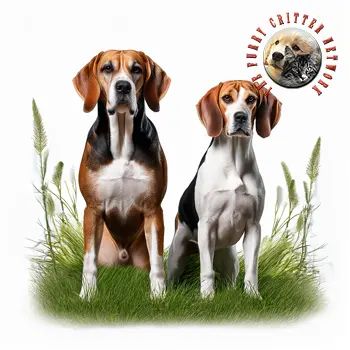Behavior
According to his standard, the Beagle is a merry, brave dog who is highly active, energetic, and determined. He is quick, intelligent, and even-tempered. He is also courageous, hardy, and very fast, with a hard-hitting voice and a keen nose. He is enthusiastic and effective on the trail, giving tongue often. He can work alone, in pairs, or in packs. This small, versatile pack hound hunts hare, rabbit, fox, deer, and wild boar. In England, he is used exclusively for beagling, or hunting hare. Affectionate and good-natured, he is a great family pet. He needs firm training.
The Beagle can adapt to city life but needs lots of space to let off steam. He must be brushed once or twice weekly, and his ears need regular attention.
Health
The median longevity of Beagles is about 12.3 years, which is a typical lifespan for a dog of their size. Weight gain can be a problem in older or sedentary dogs, which in turn can lead to heart and joint problems. Beagles may be prone to epilepsy, but this can be controlled with medication. Hypothyroidism and a number of types of dwarfism occur in Beagles. Two conditions in particular are unique to the breed:
Funny Puppy, in which the puppy is slow to develop and eventually develops weak legs, a crooked back and although normally healthy, is prone to range of illnesses
Chinese Beagle Syndrome in which the eyes are slanted and the outer toes are underdeveloped but otherwise development is as normal.
Hip dysplasia, common in Harriers and in some larger breeds, is rarely considered a problem in Beagles.
In rare cases Beagles may develop immune mediated polygenic arthritis (where the immune system attacks the joints) even at a young age. The symptoms can sometimes be relieved by steroid treatments.
Their long floppy ears can mean that the inner ear does not receive a substantial air flow or that moist air becomes trapped, and this can lead to ear infections. Beagles may also be affected by a range of eye problems; two common ophthalmic conditions in Beagles are glaucoma and corneal dystrophy. "Cherry eye", a prolapse of the gland of the third eyelid, and distichiasis, a condition in which eyelashes grow into the eye causing irritation, sometimes exist; both these conditions can be corrected with surgery. They can suffer from several types of retinal atrophy. Failure of the nasolacrimal drainage system can cause dry eye or leakage of tears onto the face.






